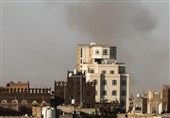New COVID-19 Restrictions Affect More than Half of England Population
TEHRAN (Tasnim) - New coronavirus restrictions have come into force in England with more than half the population facing further curbs on their social lives.
Vast swathes of the north, London and parts of the south east are now subject to tougher COVID-19 rules.
At 6pm on Friday a ban on visiting Wales from areas of high infection came into force and Northern Ireland entered a stricter lockdown than the rest of the UK.
The stronger measures have placed more than 28 million people in England into the top two tiers of restrictions.
Tier 3 rules across Lancashire meaning almost no socializing outside a household bubble is allowed and pubs, bars and restaurants are closed except for takeaway services.
Areas newly affected by the new Tier 3 rules are Burnley, Blackburn with Darwen, Blackpool, Chorley, Fylde, Hyndburn, Lancaster, Pendle, Preston, Ribble Valley, Rossendale, South Ribble, West Lancashire and Wyre.
Tier 2 rules, meaning households cannot mix indoors or in pubs, cafes and restaurants, came into force across parts of northern and south east England.
Areas newly affected by Tier 2 rules are London, Essex, Elmbridge, Barrow-in-Furness, North East Derbyshire, Erewash, Chesterfield and York.
The rule changes at midnight on Friday came just hours after the prime minister pitted himself against the city of Manchester by promising to impose the highest level of restriction - with or without Mayor Andy Burnham's blessing.
Speaking at a Downing Street news conference, Boris Johnson described the coronavirus outbreak in the city as "grave".
"On recent trends, in just over two weeks there will be more COVID patients in intensive care than at the peak of the first wave so I urge the mayor to reconsider and engage constructively.
"I cannot stress enough: time is of the essence. Each day that passes before action is taken means more people will go to hospital, more people will end up in intensive care and tragically more people will die.
"Of course, if agreement cannot be reached, I will need to intervene in order to protect Manchester's hospitals and save the lives of Manchester's residents," he said.
But on Friday the government's chief scientific adviser Sir Patrick Vallance told the same briefing "baseline" Tier 3 measures "almost certainly aren't enough" to get infection numbers down.
And when asked by Sky News deputy political editor Sam Coates if people would die as a result of the row between Downing Street and Manchester leaders, he said: "These are horrendously difficult decisions and there are harms on both sides, as it's been pointed out previously.
"From a purely epidemiological point of view, it is important to go quite fast on this, it's important to make sure that you go hard enough to get the R below 1 and the sooner you do that, the sooner you get this under control."
In Liverpool, Tier 3 restrictions have been in place since Monday, but after it was announced yesterday that Lancashire would join them in the "very high" risk level, there were accusations of inconsistencies between the two regions.
The decision to close gyms in Liverpool but not Lancashire was described as an "inconsistent mess" by the city's mayor, Joe Anderson.
In a joint statement, the regional mayor, Steve Rotherham, and six other local leaders added: "We simply will not accept our region being treated differently to other Tier 3 areas, without robust scientific evidence.
"These inconsistencies in restrictions between areas within the same tier risk undermining the new system from the beginning."
According to the latest data from the government's Scientific Advisory Group for Emergencies (SAGE), the UK R number - the rate at which coronavirus is spreading - has increased from 1.2 to 1.5 to 1.3 to 1.5 on average.
This means that for every 10 people who have the virus, they will go on to infect between 13 and 15 others.
COVID-19 hospital admissions jumped by another 844 on Friday, with a total of 5,311 patients currently being treated for the virus in England.
There were a further 15,650 new cases confirmed across the country - down from 18,980 on Thursday and 19,724 on Wednesday.
And there was also a big jump in the total believed to be infected in England - rising from an estimated 224,400 to 336,500 in a week.






